Cyclamen are a genus of about 20 tuberous perennials grown for their pink and white flowers. Most grow to about 10cm tall, although established tubers can reach the size of a dinner plate and produce dozens of flowers.
You may also like
- A Devon garden filled with cyclamen
- The best winter-flowering heathers
- Shrubs with colourful stems
- Seedheads for winter structure
Most cyclamen are found growing around the Mediterranean and across southern France, Italy, Greece and into Turkey. Cyclamen habitat ranges from deciduous woodland to scrubland and rocky areas.
Jump to
Here's our top tips for cyclamen care
Some cyclamen species flower from September to December, others from December to March.
Cyclamen hederifolium or the ivy-leafed cyclamen slowly naturalises to form sheets of flowers in autumn, and the marbled leaves are attractive in winter.
Cyclamen coum flowers in the depths of winter, with round leaves and small flowers in white, pink or magenta. It looks lovely growing with snowdrops.
Cyclamen cilicium is a lesser known, autumn-flowering cyclamen. It is hardy and will naturalise in light shade. The glossy foliage is a good winter feature.
Cyclamen persicum is often seen for sale in shops, florists and even petrol stations. The wild form is a beautiful spring-flowering plant but it is generally grown as a house plant or a late-season bedding plant as it is not hardy and needs protection from frost. It should flower for around six weeks in winter and spring in a cool, bright room.
How to care for cyclamen
Where to grow cyclamen
In general, hardy cyclamen prefer poor, well-drained soil in full or part shade. Hardy cyclamen are easy to grow as long as you avoid heavy soils that are apt to get waterlogged. If you do have very wet soil it is probably best to grow cyclamen in pots or raised beds. Cyclamen are at their happiest around the base of deciduous trees and large shrubs. These are areas that are cool and shady in the summer but light and moist during the autumn and winter. They look especially good growing around shrubs with colourful stems.
Cyclamen can also be grown in pots. Plant in a soil-based compost and leave them undisturbed. If you want them to form part of a pot display, keep them in their own pots and sink them into the compost.
When to plant cyclamen
An important consideration when growing and caring for cyclamen is whether to buy them as dry tubers or as already rooted plants in pots.
Potted plants are more expensive but will establish more quickly and flower immediately; tubers will take some time to establish and probably won’t flower the first year after planting. Plant container-grown cyclamen at the same level as they are in their pot.
The best time to plant cyclamen tubers is in autumn. Make sure that they are the correct way up – the flat or slightly indented face is the top. Plant them around 4cm deep.
How to propagate cyclamen
It is only possible to propagate cyclamen from seed. The sweeps of cyclamen that are seen in the wild are a testament to the nifty ways in which the genus has developed to ensure that its seed is distributed efficiently. Cyclamen seeds are held in capsules on the end of spring-like stems that unwind to deposit the seed as close to the ground as possible, increasing the chances of germination. Seed distribution is further assisted by ants, birds and small mammals. Attracted by the sweet coating covering the seeds, ants take away the seeds to a safe place, eat the sugars and leave the seed to germinate. Small birds that are attracted to the sweet treats eat them and then redistribute the seeds through their droppings.
The oft-quoted advice of collecting cyclamen seed and sprinkling it around has never worked for me. The expanse of cyclamen in my own garden have been produced by simply letting nature do the work and (very occasionally) collecting and sowing the seed of a species I wanted to encourage.
Cyclamen seed should be sown as soon as possible after it ripens in seed trays or shallow pans. I use John Innes seed compost with a small amount (about 10 per cent) of perlite and the same amount of leaf mould. The seed should be sown thinly and covered with about one centimetre of horticultural grit. Leave the containers in a shady place outside, keep the compost moist and wait. Germination is irregular, with some seedlings appearing after a couple of months and some waiting a year or so. Leave the young plants in the trays for a second year to develop a tuber and then plant out in the garden when they are dormant, roughly between May and August.
Cyclamen problems
The only serious pest of cyclamen is vine weevil, especially in pots. A biological control is available but only works well in the warm summer months.
The best cyclamen to grow
1
Cyclamen hederifolium

The ivy-like foliage of Cyclamen hederifolium quickly follows the emergence of the flowers, making attractive ground cover until the following spring. White, pink and ruby pink flowers appear from late August to the end of October. 10cm. AGM. RHS H5.
2
Cyclamen mirabile

Cyclamen mirabile is an autumn-flowering cyclamen species with flowers that are usually pale pink in colour, with a sweet scent. Its leaves are rounded, serrated and imprinted with a frosted pattern that resembles a maple leaf. 10cm. AGM. RHS H4.
3
Cyclamen coum f. albissimum ‘Lake Effect’
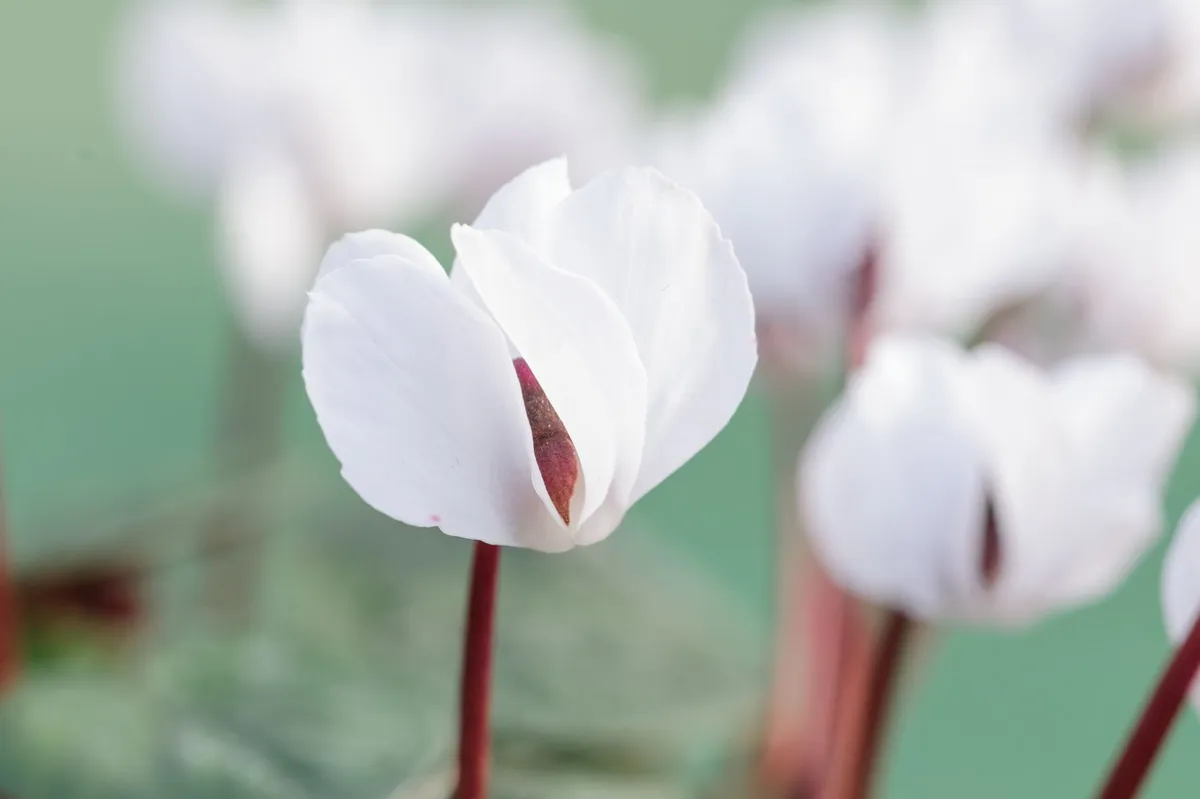
Cyclamen coum f. albissimum 'Lake Effect' is a form with pure-white cyclamen flowers that, unusually, have no colouring on the base of the petals. The leaves are deep green with a leathery texture and no markings. Flowers from late December. 10cm. RHS H4.
Buy Cyclamen coum f. albissimum 'Lake Effect' now from Ashwood Nurseries
4
Cyclamen hederifolium ‘Lysander’

The distinctive leaves of Cyclamen hederifolium ‘Lysander’ are perhaps the most showy of any cyclamen. They have deeply serrated, almost holly-like edges, which are dark green, while the centre is silver. Pale-pink flowers from August to October. 10cm. RHS H5.
5
Cyclamen coum subsp. coum f. coum Pewter Group
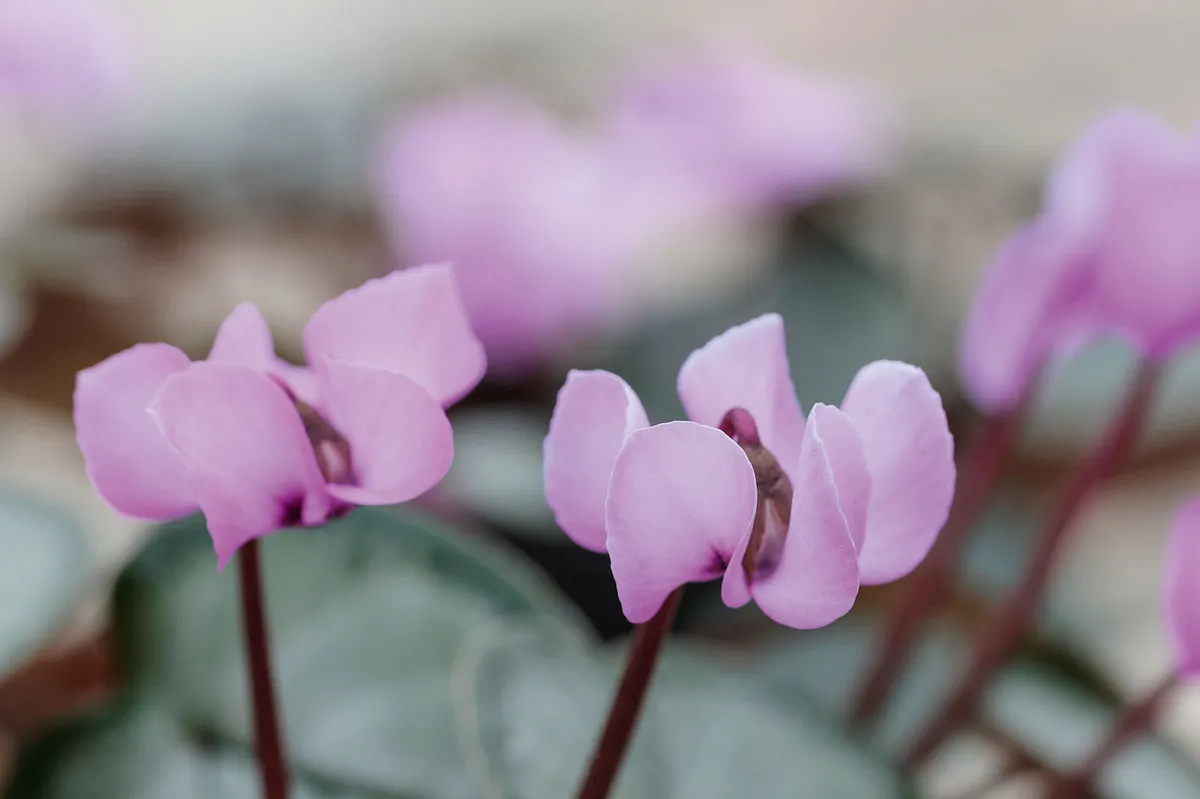
A variable group of Cyclamen coum. The best forms have pewter (not silver) leaves that have a thin margin and central midriff of green. The flowers range from pink to deep magenta, opening in late winter and spring. 10cm. AGM. RHS H5.
Buy Cyclamen coum Pewter Group from Ashwood Nurseries
6
Cyclamen coum ‘Tilebarn Graham’

The deep-pink flowers of 'Tileburn Graham' each have a dark-magenta blotch at the base of the petals, and are held above pewter-coloured leaves. Although the flowers are on the small side, they are produced in abundance in late winter and early spring. 10cm. RHS H4.
7
Cyclamen coum subsp. caucasicum
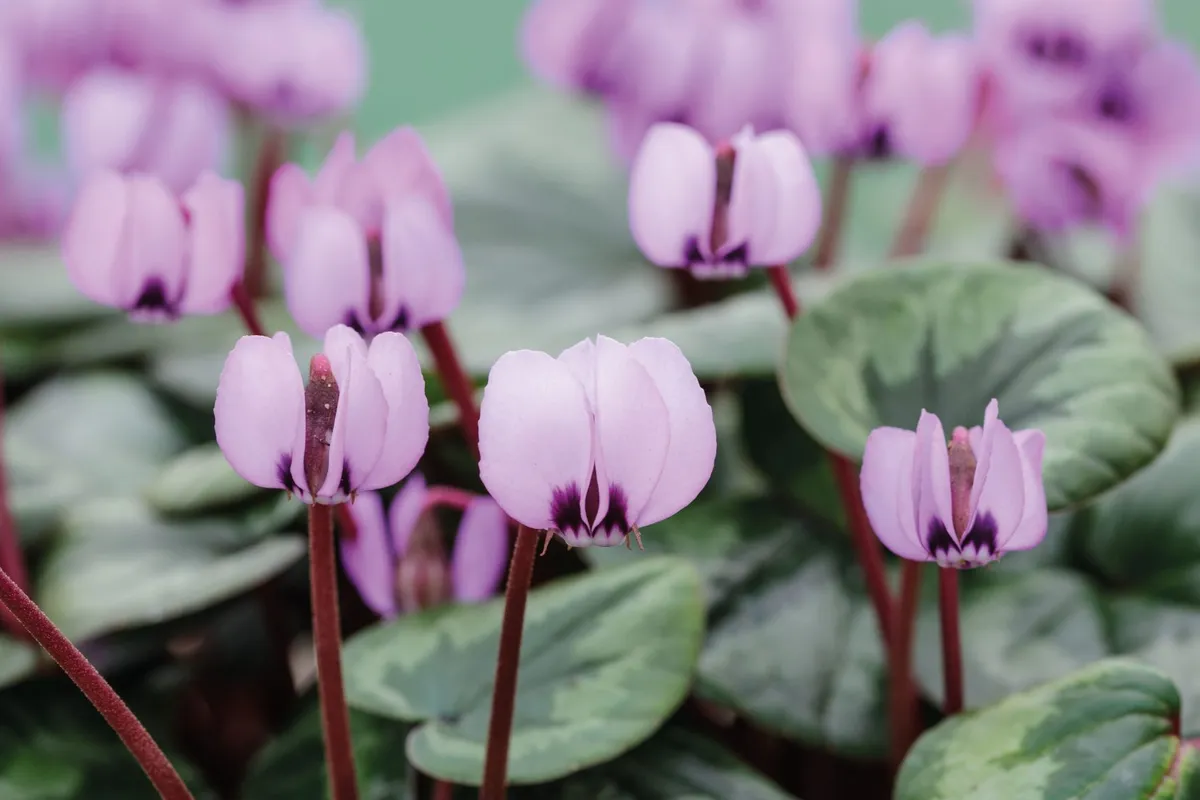
A variable cyclamen group from the Caucasus that has heart-shaped leaves with a finely scalloped edge. There is usually a distinct dark stain in the centre. The flowers appear from late winter to early spring and are squat and pale pink. 10cm. RHS H5.
8
Cyclamen confusum
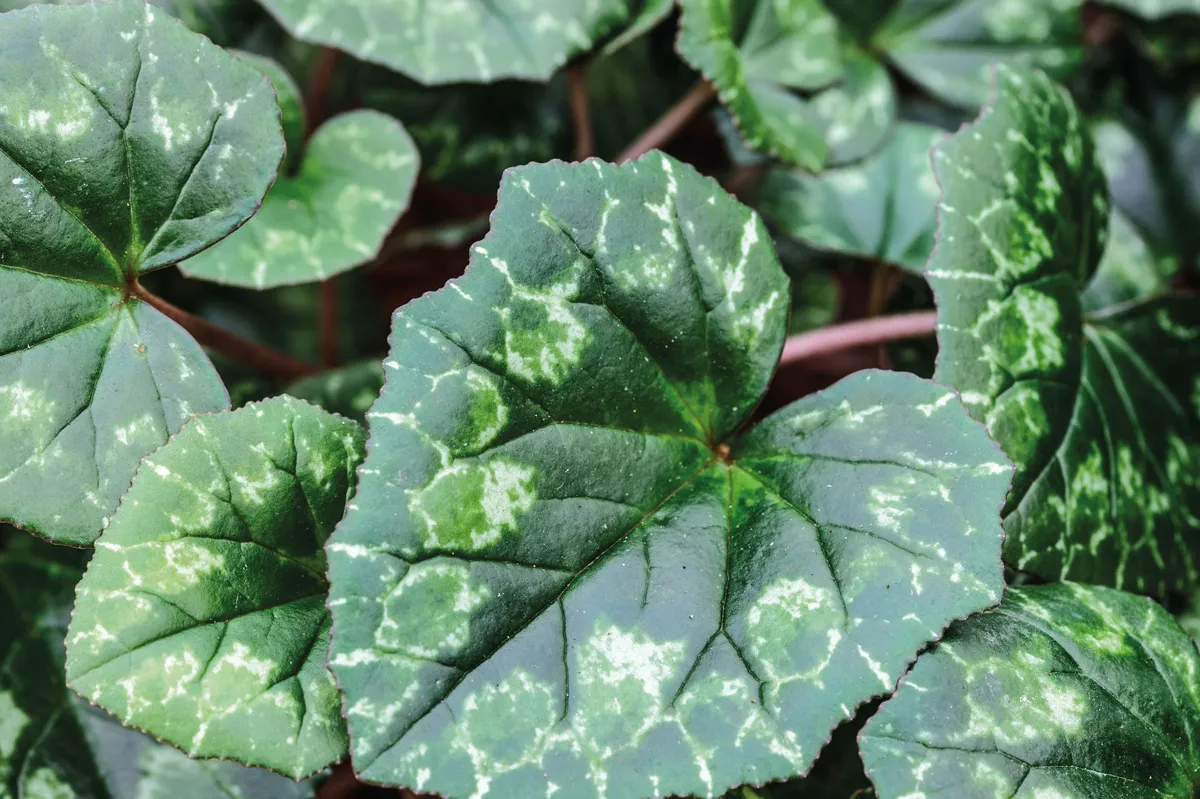
An autumn-flowering species that originates from the island of Crete. It’s similar to Cyclamen hederifolium but has slightly larger flowers. The flowers, which appear from late September to October, have a delicious honey perfume. The leaves have a glossy sheen. 10cm. RHS H4.
Buy Cyclamen confusum now from Ashwood Nurseries
9
Cyclamen coum subsp. coum f. coum Silver Group
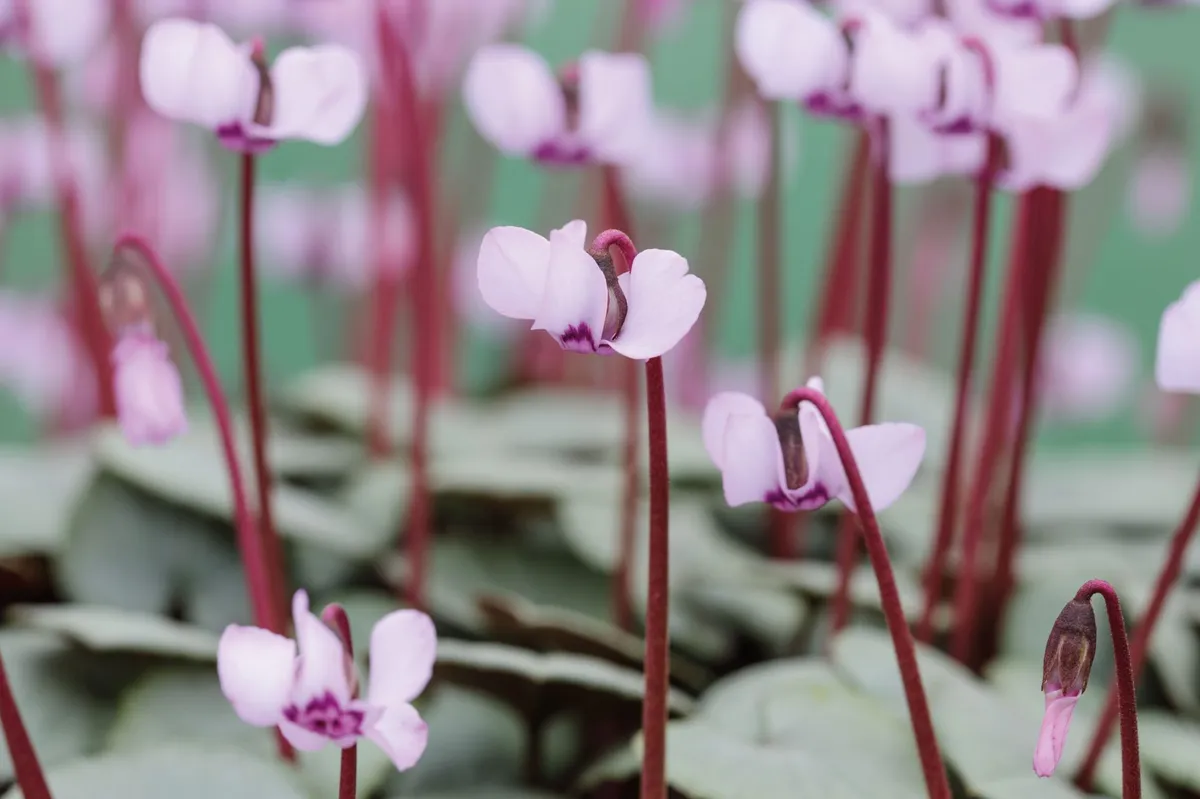
Attractive silver-grey cyclamen foliage with a rounded shape and slightly serrated edge. The flowers, from early winter to early spring, are generally shell-pink, but deep-magenta to rose-pink shades and white forms do occur. 10cm. RHS H5.
Buy Cyclamen coum Silver Group now from Ashwood Nurseries
10
Cyclamen coum ‘Ashwood Snowflake’

Raised in 2007 at Ashwood Nurseries, this cyclamen is difficult to get hold of but worth the search. Pure-white flowers open from pink-tinged buds in late winter. The pewter leaves have a dark-green centre. 10cm. RHS H5.
Buy Cyclamen coum 'Ashwood Snowflake' now from Ashwood Nurseries
11
Cyclamen coum subsp. coum f. coum (Pewter Group) ‘Maurice Dryden’
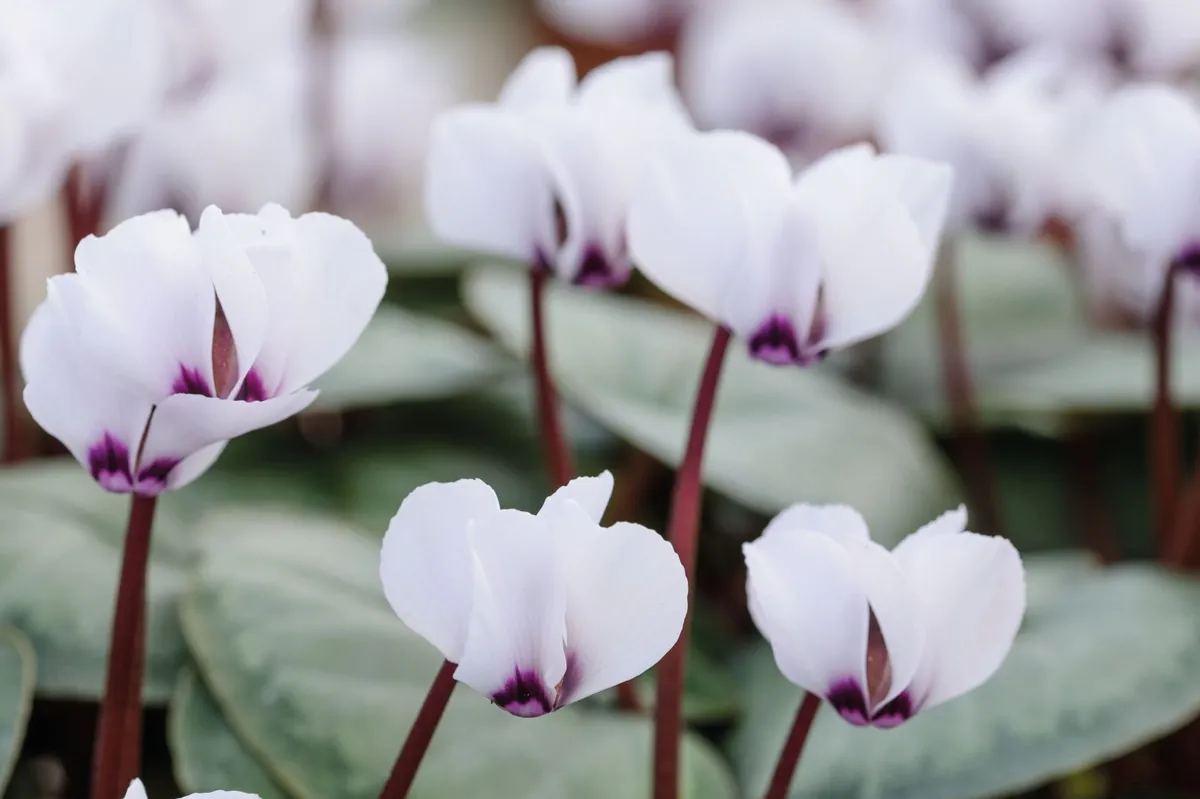
A vigorous cyclamen cultivar that is widely available. The rounded leaves are a matt pewter colour with a dark-green edge. Appearing from late winter to early spring, the white flowers have a raspberry stain at the base. 10cm. RHS H5.
Buy Cyclamen coum 'Maurice Dryden' now from Ashwood Nurseries
12
Cyclamen coum subsp. coum. f. coum 'Roseum'
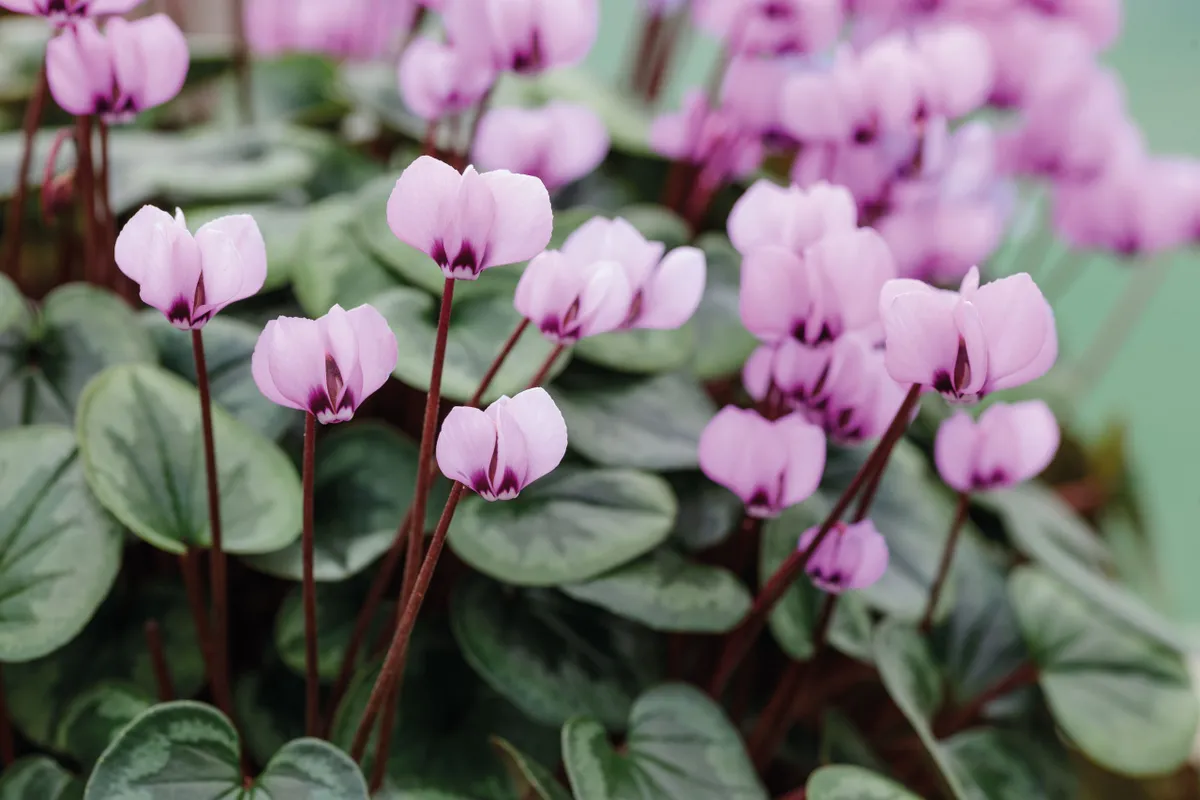
Cyclamen coum subsp. coum f. coum ‘Roseum’ is a long name for such a delicate plant. Its pale-pink flowers, held above small, rounded leaves, appear in December and last until March. 10cm. RHS H4.
Buy Cyclamen coum subsp. coum f. coum ‘Roseum’ now from Ballyrobert Gardens